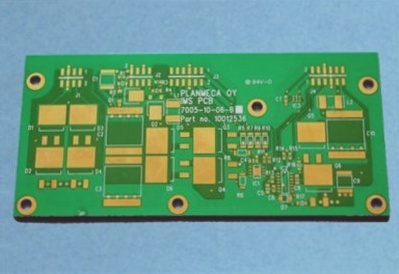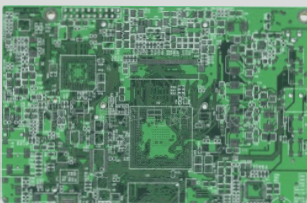1. Introduction to FR4 Board Processing Products
The processed components of FR4 insulation boards vary based on their applications, commonly referred to in the industry as: FR4 Epoxy Glass Cloth, insulation board, epoxy board, brominated epoxy resin board, FR4, glass fiber board, FR4 reinforcement board, FPC reinforcement board, flexible circuit board reinforcement board, FR4 epoxy resin board, flame-retardant insulation board, FR4 laminated board, epoxy board, FR4 light board, FR4 fiberglass board, epoxy glass cloth board, epoxy glass cloth laminate, and circuit board drilling pads.
Main technical characteristics and applications include stable electrical insulation properties, excellent flatness, a smooth surface, absence of pits, and adherence to thickness tolerance specifications. These make them suitable for high-performance electronic insulation products, such as FPC reinforcement boards, PCB drilling pads, glass fiber meson, carbon film printed glass fiber boards for potentiometers, fine star gears (wafer grinding), precision test plates, insulation support spacers for electrical equipment, insulation backing plates, transformer insulation plates, motor insulation, grinding gears, electronic switch insulation boards, and more.

1. NEMA is a data specification governed by the American Electrical Manufacturers Association. The corresponding IEC specification is EPGC202, while there is no exact equivalent in China. The closest domestic standard is 3240 epoxy laminated glass cloth board, which corresponds to EPGC201; the only difference between EPGC201 and EPGC202 is flame retardancy. Thus, FR4 can be viewed as an enhanced version of 3240 with improved flame resistance.
2. The exterior colors of FR4 insulation boards include yellow, white, black, and blue. FR4 serves as the substrate for PCBs and is classified as a sheet material. Based on different reinforcement materials, these sheets are categorized into four main types: FR4 (glass cloth substrate), FR1 and FR2 (paper substrates), CEM series (composite substrates), and special material substrates (ceramic, metal, etc.).
3. FR4 is created from special electronic cloth, laminated with epoxy phenolic resin and other materials under high temperature and pressure. FR4 insulation boards exhibit superior mechanical and dielectric properties, excellent heat and moisture resistance, and good machinability.
4. Applications for FR4 insulation boards include structural insulation components in motors and electrical equipment, various switches, FPC reinforced electrical insulation, carbon film printed circuit boards, computer drilling pads, and molds (PCB test stands), and they can also perform well in humid conditions and transformer oil.
5. Processing methods for FR4 parts include:
1. **FR4 Drilling:** A common technique in PCB manufacturing, this process is essential for PCB testing fixtures and post-processing. Larger PCB manufacturers often establish dedicated drilling rooms. Although the work is demanding, it can be more comfortable than it appears. Equipment typically includes specialized drilling rigs, drill bits, rubber particles, wooden backing plates, and aluminum backing plates. Due to the high wear of drill bits and backing plates, small companies often profit by supplying these items to factories.
2. **FR4 CNC Machining:** Known as “computer gong” in Guangdong and Hong Kong, this method refers to CNC or numerical control machining. It is versatile, processing both flat and angled surfaces, with flat computer gongs being particularly common. This method is known for its sensitivity, speed, and power, making it the most widely used technique for parts like insulating gaskets and rods.
3. **FR4 Slitting:** This prevalent market technique involves cutting boards with ordinary machines, generally achieving a rough tolerance within 5mm. Many long-established companies in Dongguan still utilize angle iron welding for cutting. Despite its simplicity, this method can yield substantial profits; for instance, one sheet can be divided into multiple smaller pieces with minimal waste.
4. **FR4 Milling and Lathes:** These methods typically process parts and are essential for fabricating jigs. The slower processing speeds of conventional milling machines and lathes can limit a company’s longevity if relied upon solely. However, they remain the best choice for working with thicker epoxy boards.
5. **FR4 Engraving Machines:** A computer engraving machine comprises a computer, a controller, and the engraving unit itself. The design layout is processed through specialized engraving software, which transmits information to the controller. The controller then converts this data into signals that drive the engraving machine’s axes. The high-speed engraving head, equipped with appropriate cutting tools, executes various engraving tasks, automating the processes of carving and polishing.
The processed components of FR4 insulation boards vary based on their applications, commonly referred to in the industry as: FR4 Epoxy Glass Cloth, insulation board, epoxy board, brominated epoxy resin board, FR4, glass fiber board, FR4 reinforcement board, FPC reinforcement board, flexible circuit board reinforcement board, FR4 epoxy resin board, flame-retardant insulation board, FR4 laminated board, epoxy board, FR4 light board, FR4 fiberglass board, epoxy glass cloth board, epoxy glass cloth laminate, and circuit board drilling pads.
Main technical characteristics and applications include stable electrical insulation properties, excellent flatness, a smooth surface, absence of pits, and adherence to thickness tolerance specifications. These make them suitable for high-performance electronic insulation products, such as FPC reinforcement boards, PCB drilling pads, glass fiber meson, carbon film printed glass fiber boards for potentiometers, fine star gears (wafer grinding), precision test plates, insulation support spacers for electrical equipment, insulation backing plates, transformer insulation plates, motor insulation, grinding gears, electronic switch insulation boards, and more.

1. NEMA is a data specification governed by the American Electrical Manufacturers Association. The corresponding IEC specification is EPGC202, while there is no exact equivalent in China. The closest domestic standard is 3240 epoxy laminated glass cloth board, which corresponds to EPGC201; the only difference between EPGC201 and EPGC202 is flame retardancy. Thus, FR4 can be viewed as an enhanced version of 3240 with improved flame resistance.
2. The exterior colors of FR4 insulation boards include yellow, white, black, and blue. FR4 serves as the substrate for PCBs and is classified as a sheet material. Based on different reinforcement materials, these sheets are categorized into four main types: FR4 (glass cloth substrate), FR1 and FR2 (paper substrates), CEM series (composite substrates), and special material substrates (ceramic, metal, etc.).
3. FR4 is created from special electronic cloth, laminated with epoxy phenolic resin and other materials under high temperature and pressure. FR4 insulation boards exhibit superior mechanical and dielectric properties, excellent heat and moisture resistance, and good machinability.
4. Applications for FR4 insulation boards include structural insulation components in motors and electrical equipment, various switches, FPC reinforced electrical insulation, carbon film printed circuit boards, computer drilling pads, and molds (PCB test stands), and they can also perform well in humid conditions and transformer oil.
5. Processing methods for FR4 parts include:
1. **FR4 Drilling:** A common technique in PCB manufacturing, this process is essential for PCB testing fixtures and post-processing. Larger PCB manufacturers often establish dedicated drilling rooms. Although the work is demanding, it can be more comfortable than it appears. Equipment typically includes specialized drilling rigs, drill bits, rubber particles, wooden backing plates, and aluminum backing plates. Due to the high wear of drill bits and backing plates, small companies often profit by supplying these items to factories.
2. **FR4 CNC Machining:** Known as “computer gong” in Guangdong and Hong Kong, this method refers to CNC or numerical control machining. It is versatile, processing both flat and angled surfaces, with flat computer gongs being particularly common. This method is known for its sensitivity, speed, and power, making it the most widely used technique for parts like insulating gaskets and rods.
3. **FR4 Slitting:** This prevalent market technique involves cutting boards with ordinary machines, generally achieving a rough tolerance within 5mm. Many long-established companies in Dongguan still utilize angle iron welding for cutting. Despite its simplicity, this method can yield substantial profits; for instance, one sheet can be divided into multiple smaller pieces with minimal waste.
4. **FR4 Milling and Lathes:** These methods typically process parts and are essential for fabricating jigs. The slower processing speeds of conventional milling machines and lathes can limit a company’s longevity if relied upon solely. However, they remain the best choice for working with thicker epoxy boards.
5. **FR4 Engraving Machines:** A computer engraving machine comprises a computer, a controller, and the engraving unit itself. The design layout is processed through specialized engraving software, which transmits information to the controller. The controller then converts this data into signals that drive the engraving machine’s axes. The high-speed engraving head, equipped with appropriate cutting tools, executes various engraving tasks, automating the processes of carving and polishing.



